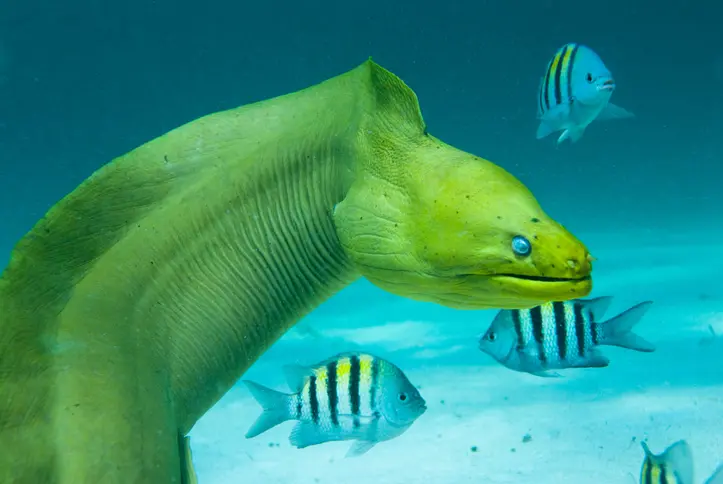Picture this: You’re gliding along a reef, sunlight flickering through turquoise water, and suddenly—there’s a thick, snake-like head staring right at you from a dark crevice. Maybe your pulse jumps a little. That’s a moray eel, and if you’re anything like me, you’ll feel both awe and a little chill of caution.
So, what really goes on in the world of morays, beyond the popular myths? Why do they fascinate scientists, divers, and even filmmakers? And most importantly: are they truly dangerous, or just misunderstood?
Moray Anatomy: More Than Just a Scary Face
Let’s start under the skin—literally. Morays (family Muraenidae) have one of the most unique designs in the fish world. Forget scales; their bodies are covered in a protective slime coat that acts as armor against parasites and abrasions. That’s why they feel so slippery if you ever (accidentally!) touch one.
The most jaw-dropping feature? Their pharyngeal jaws.
Yes, the “double-jaw” system made famous by Alien is very real in morays! When they grab prey, the inner set of jaws shoots forward and pulls it straight down the throat. This makes their grip legendary—and is one reason you should nevertry to pull your hand out if bitten, as you might make the injury worse.
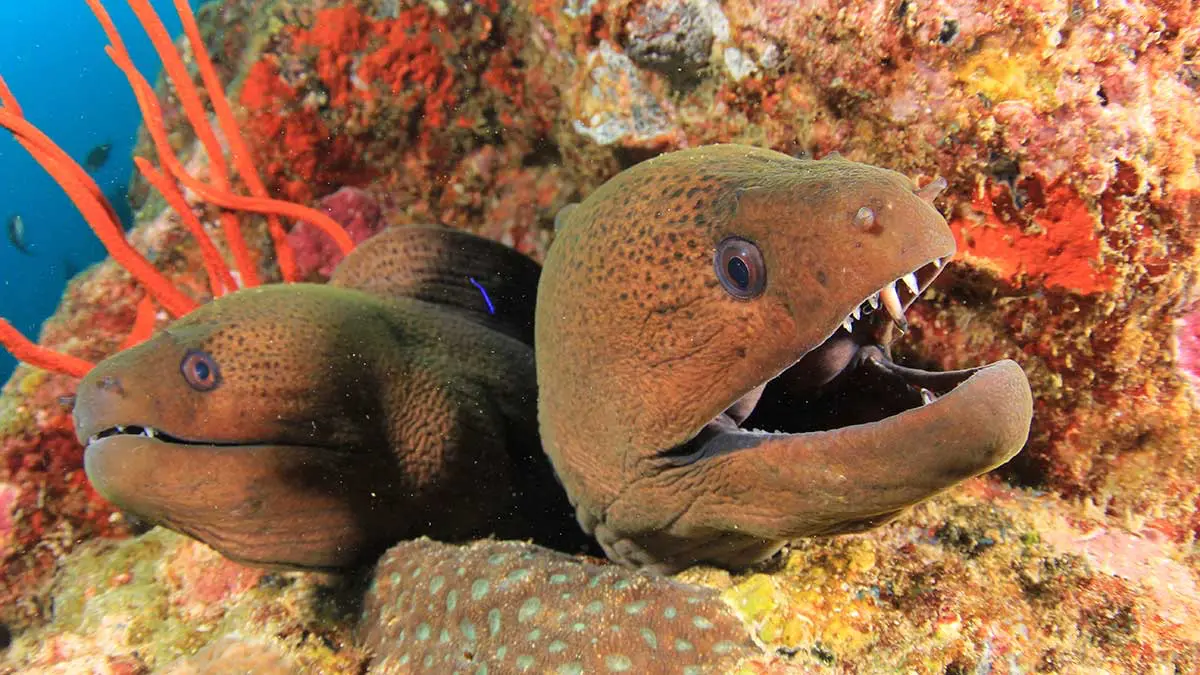
Bite Force & Bacteria
Morays have strong jaw muscles, but what really gets people is the risk of infection. Their mouths are home to potent bacteria thanks to a diet that sometimes includes carrion or leftovers. Wounds often turn nasty if not treated—think Vibriospecies, which thrive in warm, salty environments and can cause rapid, dangerous infections.
Which Moray Species Are Most Dangerous—and Why?
There are over 200 types of moray eels, but only a handful pose any real risk to humans. Here’s a quick breakdown of the “bad boys”:
- Giant Moray (Gymnothorax javanicus)
The biggest of them all—up to 3 meters long! Their size alone makes them intimidating, and they’re responsible for some of the nastiest bites reported. - Green Moray (Gymnothorax funebris)
Famous in the Caribbean and the Atlantic. Their powerful jaws and sheer boldness make them more likely to bite if provoked. - Honeycomb Moray (Gymnothorax favagineus)
Easy to spot by their spotted pattern. These are curious and sometimes approach divers, especially if they’ve been fed before. - Yellow-edged Moray (Gymnothorax flavimarginatus)
Widespread in the Indo-Pacific. Not as massive, but still capable of serious bites if disturbed.
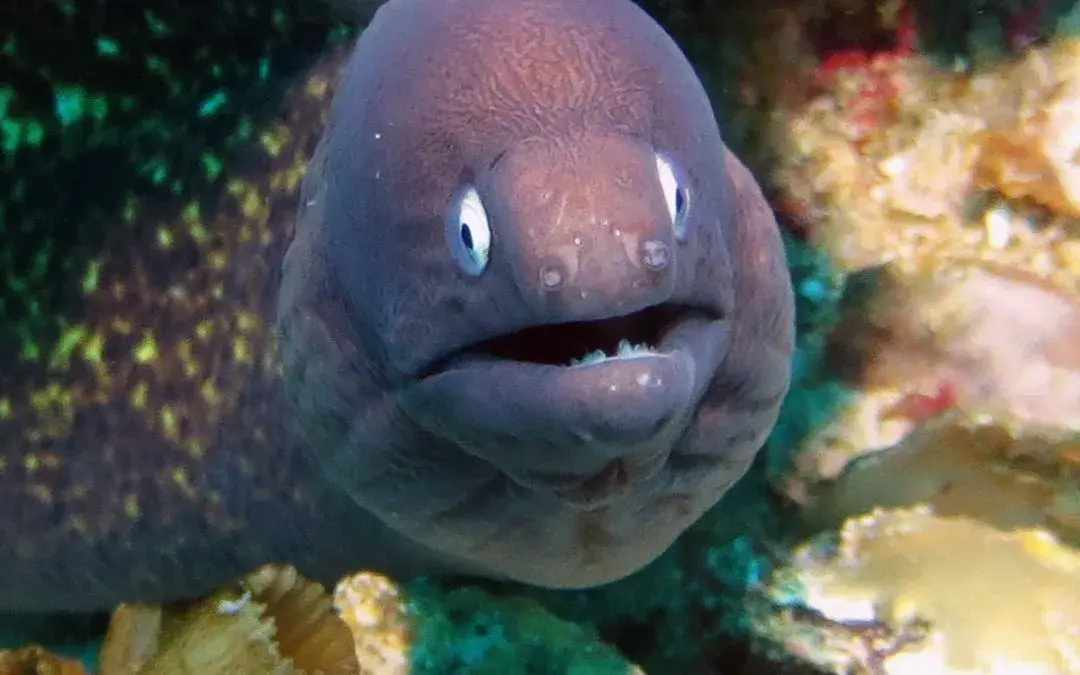
It’s worth mentioning: most attacks on humans are not “attacks” in the predatory sense. They are defensive reactions—morays are territorial, not aggressive hunters of humans.
My personal tip
If you’re heading out for a diving or snorkeling trip, always stick to trusted accommodation found on platforms like Booking, Expedia, Hotels, or Tripadvisor. This way, you know exactly what to expect—no surprises except maybe a school of colorful fish!
And don’t forget to use a VPN while traveling—not just for safe browsing on public WiFi, but also to access your favorite sites and streaming services wherever you are. Check out my Top 5 VPNs in the table below.
| My 5 Best VPN for Travel | Offer + Discount | URL |
|---|---|---|
| NordVPN | 77% off + 3 months free | Try NordVPN |
| ExpressVPN | 61% off + 6 months free | Try ExpressVPN |
| SurfShark | 87% off + 2 months free | Try SurfShark |
| CyberGhost | 83% off + 2 months free | Try CyberGhost |
| PIA VPN | 82% off + 2 months free | Try PIA VPN |
Real-Life Encounters: Stories from the Blue
I’ve talked with dozens of divers and instructors who’ve had close calls (or war stories!) involving morays. The pattern is always the same:
- A diver reaches into a hole, looking for lobster or treasure… and gets a nasty surprise.
- Underwater photographers, distracted by the perfect shot, don’t notice their hand is too close to a moray’s lair.
- Some tourists, during “feeding shows,” forget that morays have poor eyesight but an excellent sense of smell. Fingers can look a lot like fish!
There are even a few documented cases of morays biting through wetsuits or even breaking bones in a diver’s hand. But fatal attacks? Incredibly rare. More people are injured by things like sea urchins or careless boaters every year than by morays.
Eating Morays? Here’s the (Gross) Science
In some cultures, moray eels are considered a delicacy, but it’s a real gamble. Their flesh can accumulate toxins—most infamously ciguatoxin, which can cause “ciguatera poisoning.” The symptoms are nasty: nausea, hallucinations, strange temperature sensations, and muscle pain that can last for weeks.
Why do morays get so toxic? It’s all about their place in the food chain—they eat fish that have grazed on toxic algae, and the toxins concentrate up the chain. In some South Pacific islands, old stories even say morays are cursed or off-limits for this reason.
Are Morays “Friends” in the Ecosystem?
Absolutely! Morays play a crucial role on reefs by hunting sick or slow fish, keeping populations in check. They also have one of the coolest partnerships in the sea: cooperative hunting.
- Scientists have observed morays teaming up with groupers and even lionfish for hunting raids. The grouper “invites” the moray by shaking its body. The moray dives into crevices to flush out prey, while the grouper waits outside to snap up whatever flees. That’s teamwork worthy of a nature documentary.
How to Stay Safe Around Moray Eels
Here’s my no-nonsense diver’s checklist:
- Don’t stick your hands in holes or under rocks. Seriously. If you can’t see inside, assume a moray lives there.
- Avoid feeding morays, especially by hand. It’s risky for both you and the eel.
- Watch your buoyancy and fins. Kicking up sand or brushing close to the reef could provoke a defensive bite.
- If you’re bitten, get out of the water ASAP. Clean the wound thoroughly and see a doctor—no excuses.
- Respect their space. Morays aren’t looking for trouble, and they add serious cool-factor to any dive.
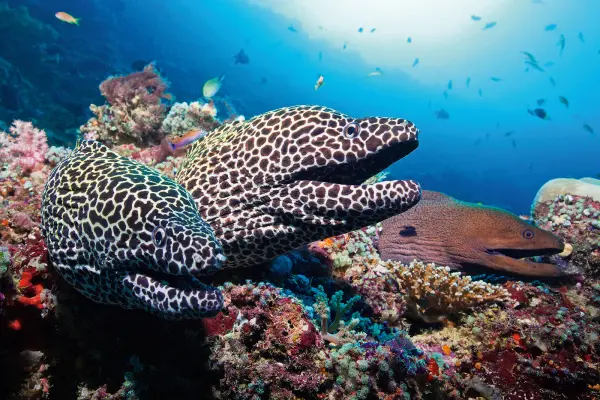
Moray Eel Myths vs. Reality: What People Always Get Wrong
Let’s clear the water—morays are some of the ocean’s most misunderstood creatures. Here are a few classic myths, and what’s really true:
Myth 1: Moray eels are aggressive monsters.
- Reality: Morays are shy and reclusive, only biting in self-defense or if provoked (often by accident). If you leave them alone, they’ll do the same for you.
Myth 2: All morays are deadly to humans.
- Reality: While a bite can be nasty, fatalities are almost unheard of. The real risk is infection, not venom or a “killer attack.”
Myth 3: Morays are snakes.
- Reality: Not even close! Morays are fish—unique, jaw-dropping, and far removed from any reptile family tree.
Myth 4: Feeding morays is a fun tourist activity.
- Reality: It’s risky for both humans and eels. Feeding changes their natural behavior, increases aggression, and can lead to dangerous situations.
10 Mind-Blowing Moray Eel Facts—Recap
- Morays have two sets of jaws, like the monster from Alien.
- The largest morays reach 3 meters and weigh over 30 kg.
- Their skin is scaleless and covered in slime for protection.
- Some species are stunningly colorful—yellows, greens, spotted patterns.
- Morays rely more on smell than sight to hunt.
- Their bodies are ultra-flexible—perfect for tight reef spaces.
- Teeth curve backward to prevent prey escaping.
- Some morays can live over 30 years.
- Morays may switch gender during their life.
- They often hunt with other predators—like groupers and lionfish—in true ocean teamwork.
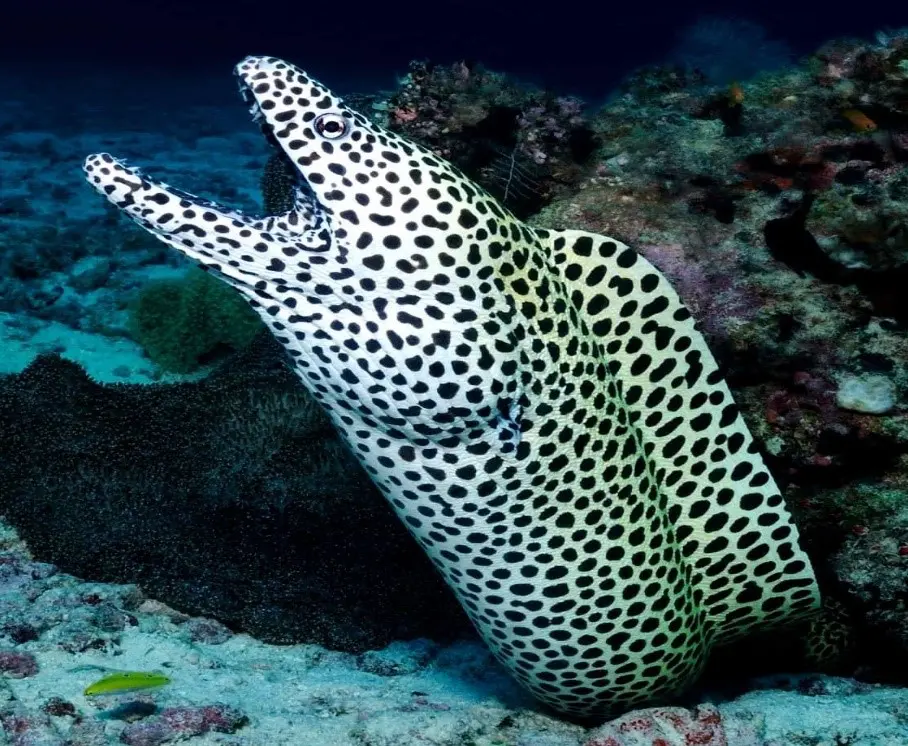
Final Thoughts: Why I Love Morays (and Why You Should Too)
If you ever get the chance to see a moray up close, don’t let fear get in the way of curiosity. Watch how they move, how they watch you, and you’ll realize they’re not monsters—just ancient, perfectly adapted survivors of the ocean. If anything, they’re a reminder that the underwater world is still full of surprises, no matter how much we think we know.
So next time you’re diving or snorkeling and spot that unmistakable silhouette in a crevice—take a breath, keep your hands to yourself, and enjoy the moment. Morays are living proof that the ocean’s greatest mysteries are often hiding in plain sight.
FAQ: Moray Eels—Safety, Encounters, and Practical Advice
Are moray eels venomous?
Most morays aren’t venomous, but their bites are prone to infection due to bacteria. Some species’ saliva may irritate wounds.
What should I do if bitten by a moray eel?
Leave the water, control bleeding, clean the wound thoroughly, and seek medical attention ASAP. Don’t underestimate risk of infection!
Where are you most likely to see morays?
Warm reefs around the world—think Red Sea, Indian Ocean, Pacific islands, Caribbean, and the Great Barrier Reef.
Can morays really bite through bone?
Large species can, yes. Their jaws are incredibly strong for their size.
Is it safe to dive with morays?
Absolutely, as long as you respect their space and don’t reach into holes or tease them.
Do morays hunt humans?
Absolutely, as long as you respect their space and don’t reach into holes or tease them.








